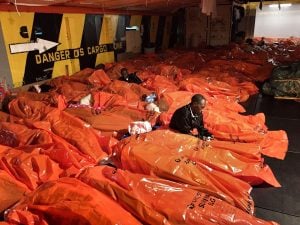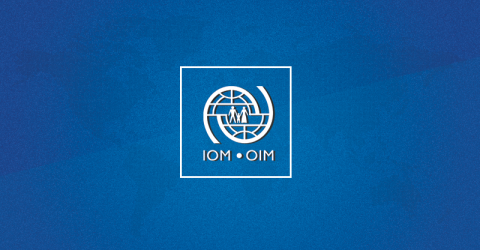By Sami Zaptia.

London, 18 November 2016:
The death toll of migrants crossing the Mediterranean Sea, mostly from the Libyan coast, hit a new record for the month of November, the International Organization for Migration (IOM) says in its latest report.
The report says that 546 migrants are reported to be dead so far in the month of November, compared to 141 in 2015 and 22 in 2014 for the whole of November.
Approximately 365 people were reported to have lost their lives in the Mediterranean this week alone in three separate shipwrecks that had set off from the Libyan coast. The figure has been rising steadily over the last few days as rescued migrants disembark in Italy and report how many had set off on their craft. This reported number is compared to the number rescued to arrive at those considered missing at sea.
These latest mortality reports make 2016 the deadliest year on record for migrants or refugees attempting the perilous crossing. The latest IOM figures say that over 4,600 migrants died in 2016 with 343,589 arriving by sea to Europe.
The top eight nationalities reported by the IOM arriving in Europe in 2016 are from: Nigeria, Eritrea, Sudan, Gambia, Ivory Coast, Guinea, Somalia and Mali.
The Malta-based NGO the Migrant Offshore Aid Station (MOAS), one of the most active search and rescue NGOs operating off the Libyan coast, says that while the number of people crossing the Mediterranean as a whole has decreased compared to previous years, the number of people attempting the Central Mediterranean rout – from Libya to Italy – has remained largely unchanged.
MOAS also reported that there has been a change in the approach of smuggling networks from the more manageable trickles in past years to departures being organized in large waves in 2016. This could be an attempt to maximize revenue and meet high demand for crossings.
The NGO also says that the whole people smuggling operations in Libya have been ‘’industrialized’’ due to increased competition in procuring rubber boats, engines and fuel containers which has led to the increased use of unseaworthy rubber boats.
‘‘The combination of heavier loads and inferior quality is a recipe for disaster’’, said MOAS Head of Operations Ian Ruggier. As a result, MOAS feels that it is almost certain that the true death toll of those attempting to cross from the Libyan coast is much higher than the recorded figures with many boats sinking without ever being reported.







